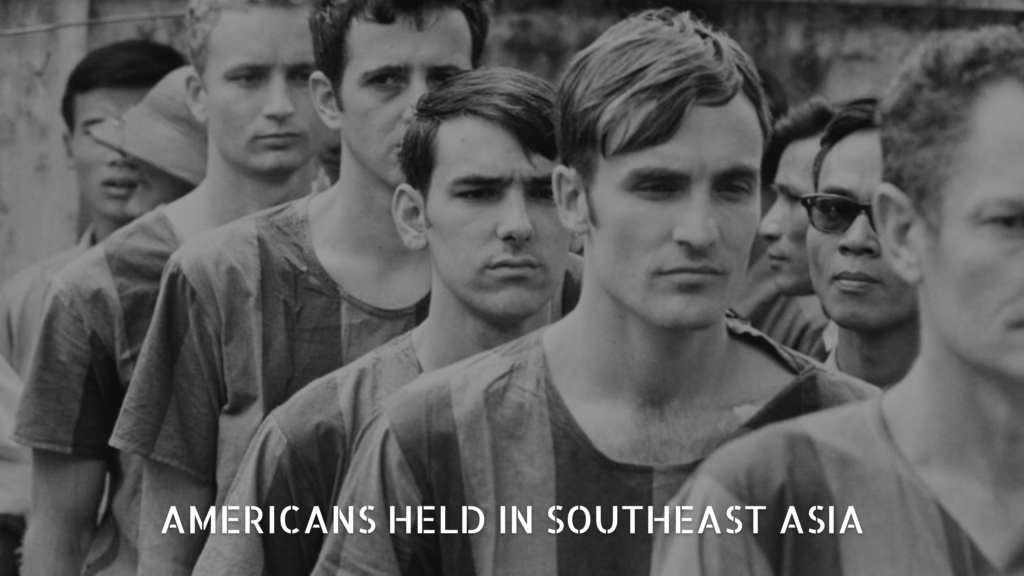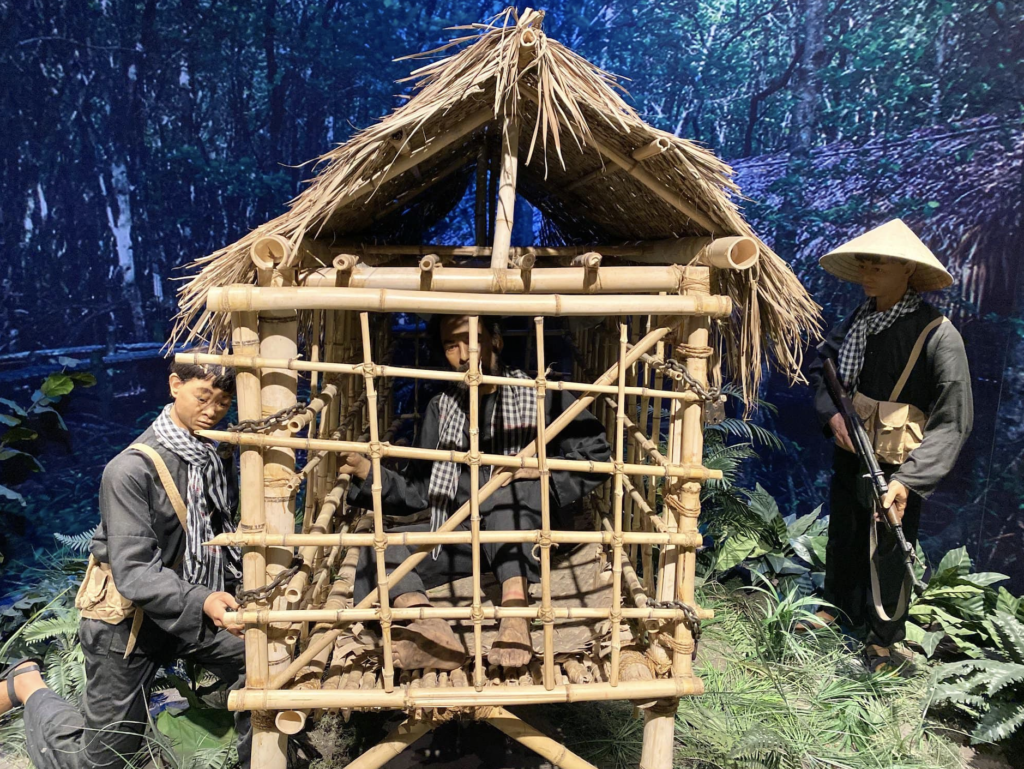Panel Two


Special Operations Museum.
American prisoners of war (POWs) in Southeast Asia endured torture, political exploitation, foul living conditions, and never-ending attempts at communist indoctrination. North Vietnam and the Vietcong treated captured U.S. servicemembers not as POWs, but as foreign invaders and criminals set on subverting Vietnam’s communist revolution.
Many POWs held in North Vietnam were downed Air Force, Navy, and Marine aircrews, the most notorious camp being the “Hanoi Hilton.” Less known are the Americans imprisoned in South Vietnam, Cambodia, Laos, and even China. These prisoners tended to be Army personnel. Different from POWs imprisoned in North Vietnam, Army prisoners taken prisoner in South Vietnam were often held chained or shackled in thatched huts, caves, or in claustrophobic “tiger cages.” Soldiers’ treatment at the hands of the Viet Cong, like that of the Americans imprisoned in North Vietnam, resulted in great suffering, poor nutrition, infections and diseases, beatings and untreated wounds.
At home families could not be sure if prisoners were alive or dead, and the question of POW treatment became a major public issue during the war.



